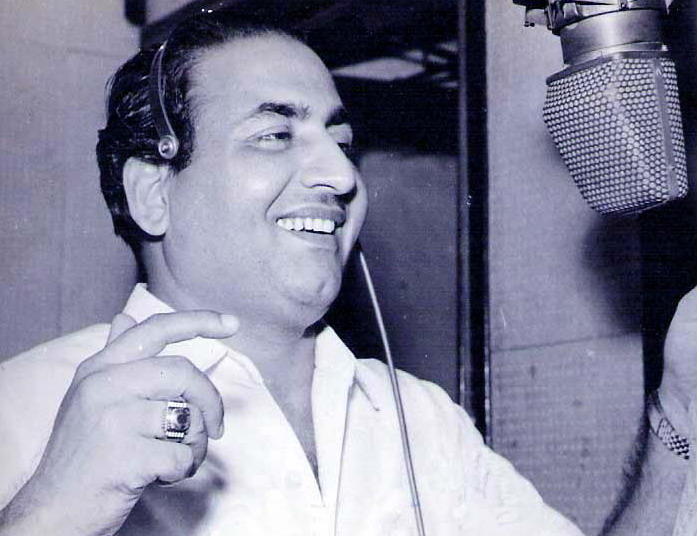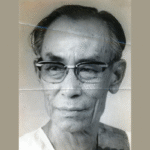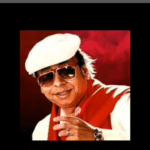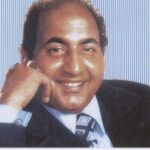When we see his voice sit ‘pat’ on Dilip Kumar and Dev Anand who started out in the ‘40s through Shammi Kapoor, Dharmendra and Rishi Kapoor (1950s to 1980s) and then go perfectly on someone like Govinda in the 1989 Farz Ki Jung, we realize that Mohammed Rafi and his artless vocal magic transcends time. But there is more to Rafi than just his musical treasury – he is as relevant today as he was in his lifetime, and has been for 45 years since he passed away on July 31, 1980.
Rafi lives on
And why is that? To understand that, we must study and analyze exactly what happened after Rafi passed away, when he was right at the top. Not only did he deliver multiple chartbusters in 1980 itself, he also dominated several big-ticket scores in that year (Aasha, Dostana, Ram Balram, The Burning Train, Shaan, Swayamwar, Kali Ghata, Do Premee and Aap Ke Deewane) among male playback voices.
After this, his songs in big films were a regular till late 1982, and he had major hits and popular numbers after his death (Shaan, Dostana, Ram Balram, Do Premee, Kaatilon Ke Kaatil, Professor Pyarelal, Naseeb, Kranti, Hum Paanch, Aas Paas, Ladies Tailor, Kudrat, Rajput, Desh Premee, Insaan, Poonam, Zamaane Ko Dikhaana Hai).
More songs in delayed films kept coming for almost a decade with Farz Ki Jung, where Bappi Lahiri’s song Phool ka shabab kya recorded in the late ‘70s for another film, was filmed on Govinda in 1989. And Govinda had appeared only in 1986!
As late as in 2009, Madan Mohan’s unreleased songs were included in a Yash Raj Music album, Tere Bagair, while Universal released an entire unreleased Rafi-based film score composed by Chitragupta. A Naushad-composed devotional track or two and a song that Rafi had recorded for Habba Khatoon, a film that was never made, were also released at various points in the last decade, and Rafi-bhakts await the day when J.P. Dutta agrees to release the title song of his first film Sarhad¸ a Sahir-Laxmikant-Pyarelal number that Rafi had raved about on record in his interviews in the late 1970s.
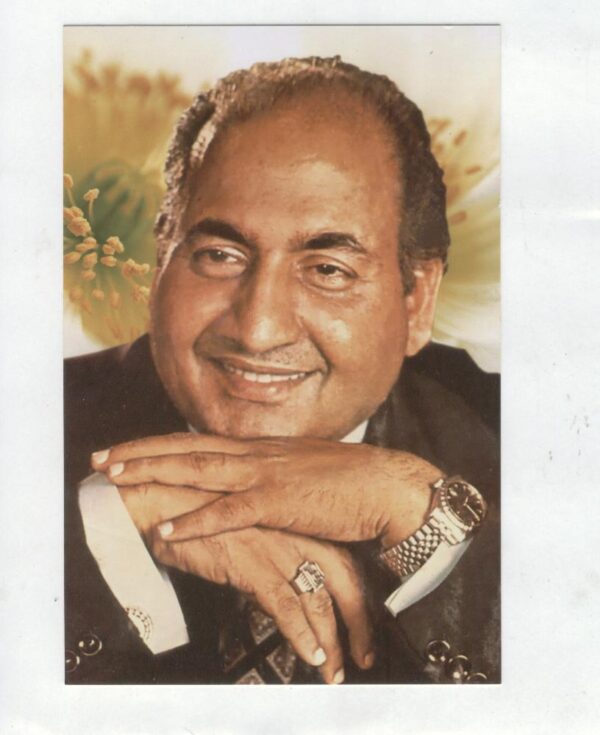
And last but not the least, let us not forget that 45 years after his death, dozens of Rafi-based orchestras still play to packed houses in India and outside, with a wide variety of ‘Rafi’ voices earning their livelihoods by singing his songs.
The Void
So intense was the vacuum we saw after Rafi’s death that the immediate consequence of his absence was a spurt in Rafi clones. The first to hit limited big-time was Anwar, who had started out in Rafi’s lifetime. Anwar got some popular numbers that made him sound vocally like the legendary original, notably Kahaan jaate ho ruk jaao (Dulha Bikta Hai) and Mohabbat tijarat ban gayi hai (Arpan).
Industry sources hint at Anwar’s decline because of lack of professionalism, but so deep was Rafi entrenched in music lovers’ and composers’ psyches that when Manmohan Desai had a spat with Kishore Kumar, he “ordered” Laxmikant-Pyarelal to look for a similar voice, and in came Gujarat-based Rafi show singer Shabbir Kumar. And what LP did, others followed in those days.
From 1983 to 1985, Shabbir Kumar, solely on the strength of his ability to do a Rafi, had chartbusting scores of the level of Coolie, Betaab, Ek Jaan Hain Hum, Woh 7 Din and Pyar Jhukta Nahin, the last-mentioned album enabling Mithun Chakraborty to break his B-grade disco shackles and also kick-starting T-Series’ spiral to the top.
But while Shabbir had a powerful vocal throw, high-pitched Rafi was not really his forte. In came Mohammed Aziz, who had made his Hindi debut, after singing in Kolkata restaurants and a regional film or two, in Sapan-Jagmohan’s Ambar (1984). Munna (as he was termed) could sing like the genteel Rafi as well as scale the higher octave. He took off with Rajesh Roshan’s Aakhir Kyon? and Anu Malik’s Mard in 1985, and Laxmikant-Pyarelal employed his vocals in over 15 films in a single year (1986), singing for everyone from Dilip Kumar and Rishi Kapoor to Amitabh Bachchan and Rajesh Khanna.
With Karma, Amrit, Aakhree Raasta, Khudgarz, Shahenshah, Ram Lakhan, Saudagar, Khuda Gawah, Sindoor, Love 86 and more until the early 1990s, Munna reigned at the charts, while Shabbir also remained around in films like Paap Ki Duniya, Tezaab, Aag Hi Aag, Ilzaam and more, and many films like Mard, Love ‘86 and Pyar Kiya Hai Pyar Karenge saw them share the Rafi spoils. And so we came to the very interesting point that from ’84 to late 1987 when Kishore Kumar passed away, Shabbir and Aziz between them were actually recording more than Kishore was!
A small break, and then back to Rafi!
But when Kumar Sanu proved a sensation in 1990, it was a short reprise of Aradhana, as the two “Rafi-ians” lost ground rapidly. Sanu was sharing the Kishore legacy with Vinod Rathod and Babul Supriyo and a wannabe-original Amit Kumar. And in this phase, none of the assorted new Rafi naqals who tried to make their marks – Debashish Dasgupta, Vipin Sachdeva and Mangal Singh – could make it.
But Rafi was so synonymous with Hindi film music that Udit Narayan, a singer with an original voice and style who emulated Rafi’s approach to playback vis-à-vis singing technique, shot past Sanu in 1995, indicating conclusively that short breaks like these reaffirmed that the staple diet could only be Rafi!
Udit’s refined style revived the Rafi culture again in a fresh, original packaging, and the singer reigned until the early millennium when Sonu Nigam, also a Rafi follower and (out of compulsion) an early clone of Rafi who had done cover version albums of Rafi’s songs for T-Series, overtook Udit! And by this time this happened, all the Kishore followers were on the fadeout!
Sonu, trained classically like Udit, remained the first choice for songs with depth, come Paheli, Jaan-E-Mann or Parineeta. But even others like Roopkumar Rathod, Sukhwinder Singh and Javed Ali also seemed to be treading the Rafi path.
The voice for all time
And that is why Rafi is supremely relevant even today. If ever AI makes it endemic (!!!) that the exact voice of a past artiste can be put on a modern tune, the voice of Mohammed Rafi will dominate as much as it did from the ‘50s to the early ‘80s!
Because the ground reality is strong enough to motivate thought in that direction. In the last few years alone, dozens of songs across various composers seem to crave for Rafi, or give reasonable, if not certain, reasons to suggest that Rafi seems to loom large even in the psyche of the current generation of composers.
It is a subconscious desire to work with Rafi that makes a Pritam, as late as in fusion-infested 2010, compose the intense Phir mujhe dil beqaraar (Toh Baat Pakki)? What was A.R. Rahman thinking of when he made the almost Naushad-ian Kismat se tum humse mile ho in Pukar and the haunting Do qadam in
Shantanu Moitra has stressed that he had Rafi in mind for many of his compositions that Sonu has sung for him. And Shankar-Ehsaan-Loy, Shekhar Ravjiani of Vishal-Shekhar, Himesh Reshammiya and many others have said similar things. Rafi also remains an undying source of inspiration for current hotshots Amit Trivedi and Sachin-Jigar.
All that it shows it that Rafi remains perennial in more than just the musical legacy he has left behind.
(Used under special arrangement with NIT)


